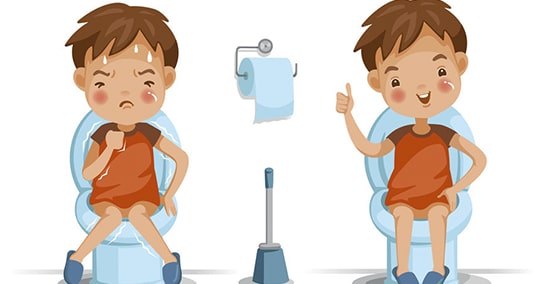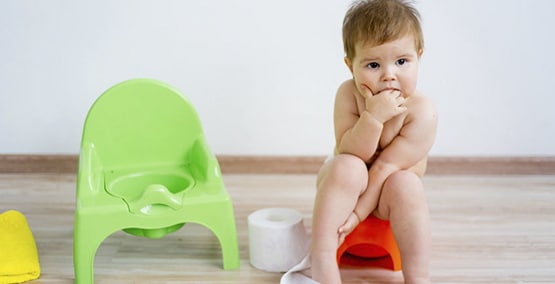
Correct chronic constipation in kids
A 3-step process to clear-out the bowel when they're backed-up
Occasional constipation can be normal. Usually, it is caused by a diet low fiber or not enough fluids in the diet. However, if you or your child has been suffering from chronic constipation for weeks or months, you may need to seek help from your doctor and follow our 3- step process for correcting the constipation and getting your bowel movements back on track.
Correcting Chronic Constipation is a 3-Step process:
- Clear out the bowel
- Clean up the diet
- Change the habits
1. The Clear-Out
The first step is to clear out the stool that is stuck in the bowel. This step usually requires a laxative or an enema which stimulate activity in the colon to help pass stubborn stools. Proper hydration is needed before using an enema to prevent electrolyte imbalances. Therefore, the use of enemas and laxatives must be under the guidance of your healthcare provider to ensure your health and safety.
2. Clean up the diet
Once the stool is cleared out, it is important to make sure the next stools are soft and easy to pass. This requires getting enough fiber and fluids into the diet to help bulk up the stool and increase the sensation of needing to go. Additionally, the fiber helps maintain healthy bacteria in the intestine which can improve bowel movements in the future.
Eat More Fiber
Children need about 5 grams a fiber, plus one gram extra for every year of age. For example, an 8 year old would need 13 grams of fiber daily (8 [age] + 5 grams). Additionally, older teens and adults should aim for about 25-35 grams of fiber daily. Most of this fiber should come from daily servings of fruits and vegetables and healthy whole grains. If needed, fiber supplements can also be used, but ask your doctor about the best options for your child's needs. Remember that eating too much fiber can cause gas and bloating so avoid overusing supplements.
Drink More Fluid
Like fiber, the amount of fluid is important for soft stools. Stay hydrated throughout the day so that your pee is pale yellow or clear. As a rule of thumb, drink water or other fluids after going to the bathroom as a reminder to stay hydrated.
For children, offer water and milk as the primary sources of fluid and try to avoid sugar sweetened beverages and juice. Below is a chart of recommended ounces children need daily.
| Age (years) | Approximate ounces needed |
| 1-3 | 40 |
| 4-8 | 44 |
| 9-13 | 70 for girls (+ 10 more for boys) |
3. Change the habits
Get tracking
It can take at least 90 days to break a habit. So, if your child is constipated from holding back stools, it may take a while to get used to passing stools when the urge is there. Breaking this habit starts with tracking pooping patterns. Use a calendar to track stool frequency and appearance (size and firmness), and the Bristol Chart to show what kind of stools are passed each time.
Blow up balloons and play the kazoo
For children who are learning to properly pass stools, we recommend having the child sit on the toilet for 5-10 minutes after a meal to practice tummy breathing.
Tummy breathing activities can include:
- Blowing bubbles or a pinwheel
- Playing a harmonica or kazoo
- Blowing up balloons or a glove
These potty activities can help teach your child how to activate their tummy muscles to help them pass stools easier. The fun activities can also create a more relaxing environment for children who may have fears around using the toilet and pooping.
Give Gold Stars
Be sure to reward your child for his or her success. You can sometimes motivate your constipated kid by offering little prizes or small sums of money for each success. Or maybe your kid may enjoy extra screen time or a trip to the park. Please avoid using food and sweets as a reward because it sends the wrong nutritional message about the role of food in a child's life.

The Whole Program
Remember, this process takes practice and patience. While the program usually works, it often takes several months. Even so, the constipation can still return. However, with all of the tools in place, the constipation is usually quicker and easier to fix.
If the program doesn't work, other factors may be involved such as:
- Problems with rectal muscle tone
- Problems with rectal nerves
- A stretched rectum
- Never learning how to properly empty bowels
Bottom Line
Chronic constipation can be corrected by clearing out the bowel, cleaning up the diet, and changing habits that are causing the constipation. Laxatives and enemas should be used under the supervision of your doctor; fluids and fiber should be from whole foods; and a calendar should be kept to track stool frequency and appearance.




